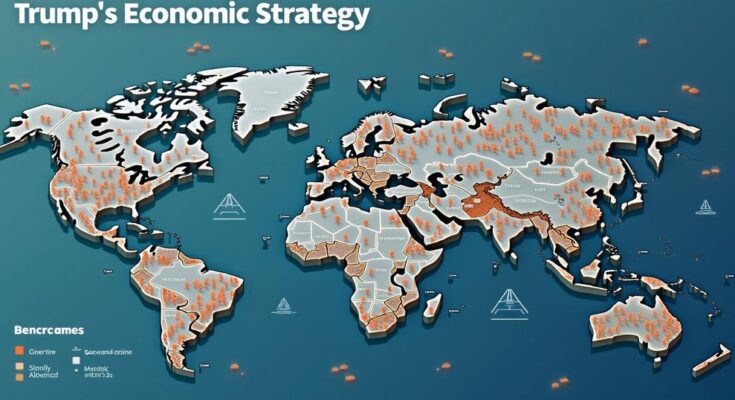Donald Trump’s economic strategy proposes aggressive tariffs to enhance U.S. manufacturing, primarily targeting Chinese imports. While he envisions increased revenue and reduced trade deficits, experts warn about potential inflation and higher consumer costs. His plans include extending tax cuts and deregulating the energy sector, but the feasibility of returning manufacturing to the U.S. remains questionable amidst concerns of retaliatory global trade responses and economic complexities.
Donald Trump’s economic strategy for revitalizing American manufacturing hinges on aggressive tariffs aimed at foreign goods, particularly from China. The vision is grand, but lurking beneath the surface are concerns that the path to increased manufacturing could lead to rising inflation and higher prices for consumers. As Trump declared during the September debate, “Other countries are going to finally, after 75 years, pay us back for all that we’ve done for the world,” showcasing his belief in a renewed focus on domestic production. Trump proposes across-the-board tariffs ranging between 10% to 20%, including a staggering 200% on automobiles imported from Mexico. However, it’s often overlooked that these tariffs typically hit US businesses, which are forced to shoulder the burden of import taxes, potentially passing these increased costs onto consumers. Experts warn that such moves could spike inflation, with estimates suggesting a rise of up to 1.3 percentage points next year if these tariffs are implemented and retaliatory measures from other nations ensue. Adding to the complexity, Trump aims to extend previous tax cuts and cut corporate tax rates further, but experts from the Tax Foundation argue that the tariffs might contradict these tax benefits, complicating the overall fiscal landscape. Economists caution that manufacturing’s return to the US will not happen overnight due to the long-standing outsourcing of production; the infrastructure and labor force necessary for such a swift turnaround are simply not in place. While Trump remains adamant that tariffs won’t increase consumer prices, past experiences reveal mixed outcomes, with supply chain interruptions effectively absorbing the impact of tariffs as businesses adjust. Oxford Economics warns that his strategy might decimate US-China trade by up to 70%, reshaping the global trade map and risking an overall 10% shrinkage in trade volumes. Moreover, while Trump’s energy policy promises to halve energy bills in a year, experts doubt that deregulations will lead to the expansive production increases needed to meet consumer expectations. His plan to limit agricultural imports with the goal of lowering food costs might, paradoxically, invite retaliatory actions that would hurt the very farmers he seeks to protect. Amidst all this, one thing remains clear: the interplay of tariffs, tax policies, and broader economic ideals sets the stage for a tumultuous economic landscape as the November elections loom closer.
The article outlines Donald Trump’s economic plan primarily focusing on tariffs aimed at boosting U.S. manufacturing and addressing trade imbalances, especially with China. It highlights the potential consequences of these policies, including inflation, higher consumer costs, and the challenges in returning manufacturing to the U.S. It discusses the proposed tax cuts and the interplay between tariffs and taxation, along with the potential global impacts and challenges posed by retaliations from other countries. The economic forecast includes the effects of deregulation in the energy sector and agricultural import policies, presenting a complex picture ahead of the upcoming elections.
In summarizing Trump’s economic strategy, the focus on tariffs emerges as a central theme aimed at reviving manufacturing but enshrouded by risks such as increased consumer prices and inflation. Experts warn of complex repercussions from both domestic and international perspectives, suggesting a significant shake-up in global trade dynamics. With tax reforms and energy policies also on the table, the path forward remains uncertain, necessitating careful navigation as the election nears.
Original Source: www.hindustantimes.com



